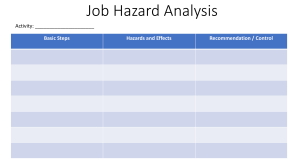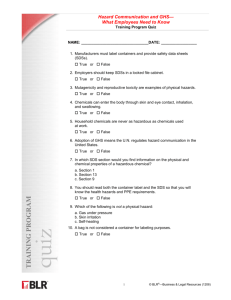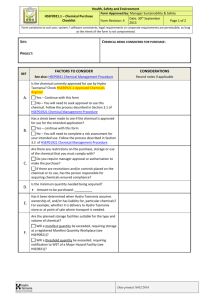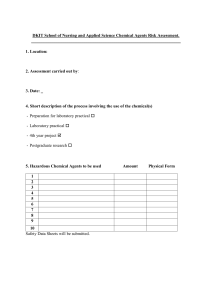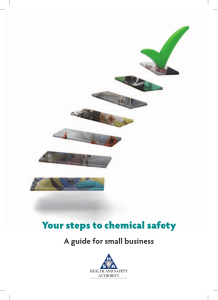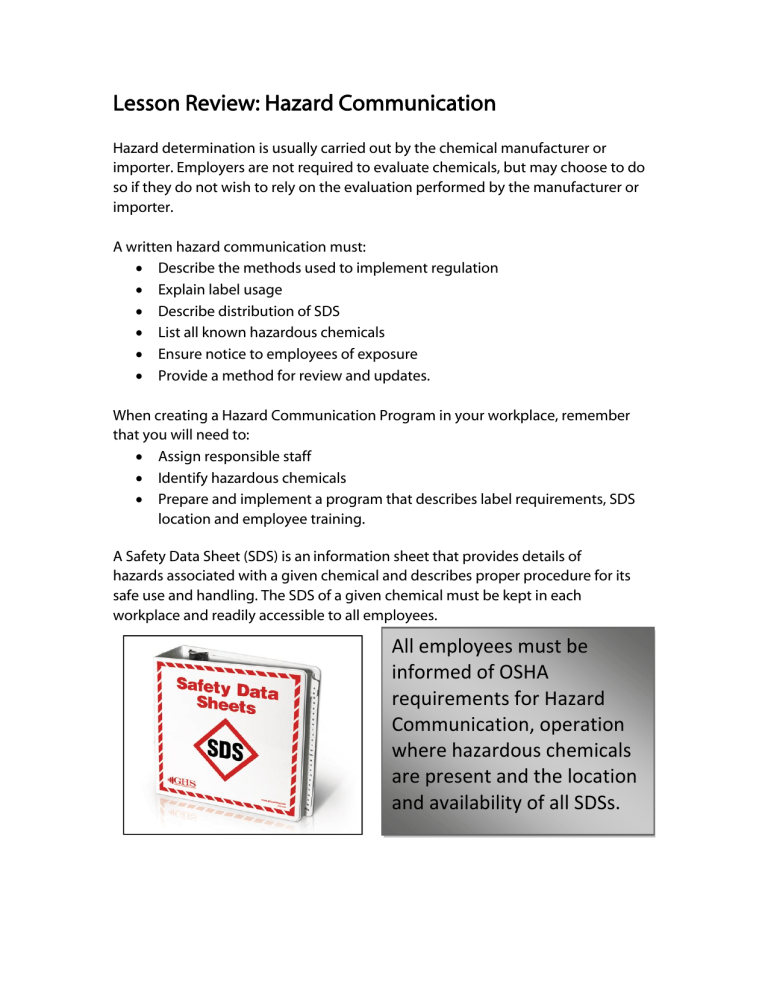
Lesson Review: Hazard Communication Hazard determination is usually carried out by the chemical manufacturer or importer. Employers are not required to evaluate chemicals, but may choose to do so if they do not wish to rely on the evaluation performed by the manufacturer or importer. A written hazard communication must: • Describe the methods used to implement regulation • Explain label usage • Describe distribution of SDS • List all known hazardous chemicals • Ensure notice to employees of exposure • Provide a method for review and updates. When creating a Hazard Communication Program in your workplace, remember that you will need to: • Assign responsible staff • Identify hazardous chemicals • Prepare and implement a program that describes label requirements, SDS location and employee training. A Safety Data Sheet (SDS) is an information sheet that provides details of hazards associated with a given chemical and describes proper procedure for its safe use and handling. The SDS of a given chemical must be kept in each workplace and readily accessible to all employees. All employees must be informed of OSHA requirements for Hazard Communication, operation where hazardous chemicals are present and the location and availability of all SDSs.
